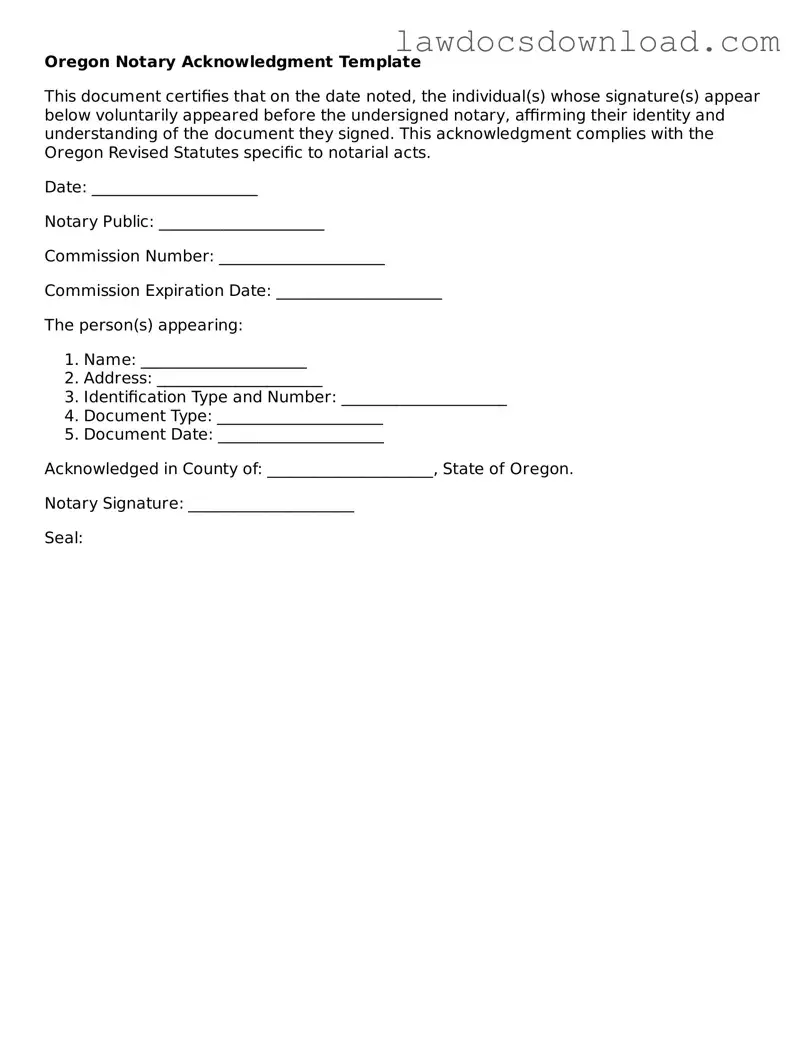The Oregon Notary Acknowledgement form shares similarities with the Jurat form, in that both are used to certify the authenticity of a signer's signature on a document. However, while the Notary Acknowledgement confirms that the signer acknowledged to the notary that they signed the document willingly and for the purposes contained within, a Jurat certifies that a document was signed in the notary’s presence and that the signer swore to or affirmed the truth of the contents of the document.
Similarly, the Verification upon Oath or Affirmation is another document that parallels the Oregon Notary Acknowledgement form. This document also requires a signer to swear or affirm the truth of the document's contents before a notary. The key similarity lies in the involvement of a notary who witnesses the signer's oath or affirmation, ensuring the document's authenticity and the signer's genuine intent.
The Power of Attorney is a legal document that grants one person the authority to act on behalf of another. Like the Oregon Notary Acknowledgement form, it typically requires notarization to confirm the identity of the signer and to ensure that the signer understands the document and is signing of their own free will, thereby lending it credibility and legal weight.
A Deed of Trust is an agreement used in real estate transactions involving a borrower, lender, and a trustee. This document often necessitates a Notary Acknowledgement to verify the identity of the signing parties and cement the deed’s authenticity. This validation process mirrors the Oregon Notary Acknowledgement form’s role in ensuring signatory authenticity and willingness.
Loan Agreements, binding contracts between borrowers and lenders, also require notarization for similar reasons as the Oregon Notary Acknowledgement form. The notarization process in both instances guarantees that the parties involved are who they claim to be, understand the document’s contents, and have entered into the agreement of their own volition.
Last Will and Testament documents, a crucial component in estate planning, often need a Notary Acknowledgement to validate the identity of the testator (the person making the will) and to confirm that the document genuinely represents their final wishes. This parallels the role of the Oregon Notary Acknowledgement form in ensuring that documents are signed and acknowledged by the rightful parties.
Apostilles, which authenticate documents for international use, operate under a verification premise akin to that of the Oregon Notary Acknowledgement form. While an Apostille certifies the authenticity of the document for use across borders, the Oregon Notary Acknowledgement form authenticates the signature and intent of the document's signer within a legal framework.
Finally, the Affidavit, a sworn statement made under oath, resembles the Oregon Notary Acknowledgement form in its requirement for a signer's statement to be confirmed by a notary. This connection underscores the integral role notarization plays in affirming the truthfulness of documents and the sincerity of the signer's intentions.
